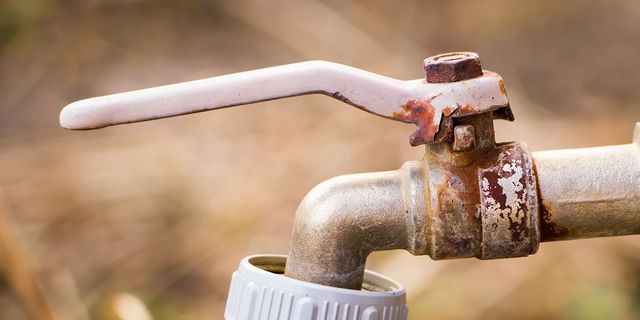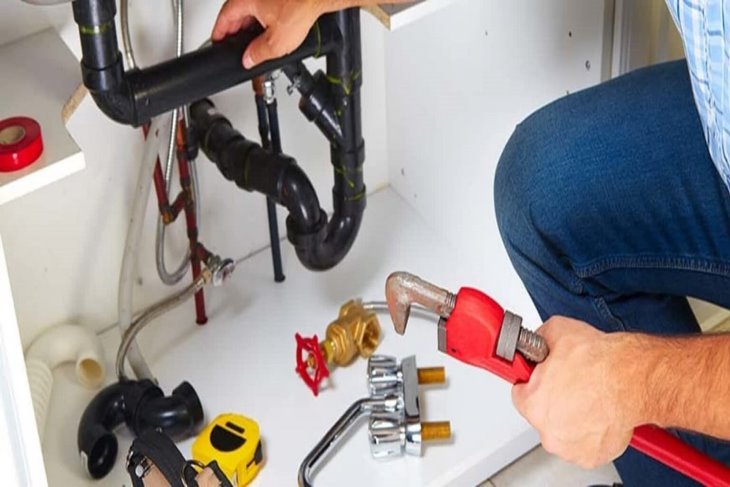Professional Advice on Handling Plumbing in Older Homes
Professional Advice on Handling Plumbing in Older Homes
Blog Article
Are you currently trying to find critical info involving Plumbing Issues in Older Properties and How to Fix Them?

Older homes commonly include beauty, character, and history, however they can additionally bring a host of plumbing issues. Whether you're managing aging pipelines, low tide pressure, or leakages, knowing how to attend to these common problems is essential to preserving a safe and useful home. In this overview, we'll check out the normal plumbing difficulties faced by older homes and offer sensible options to maintain your plumbing in leading shape.
Recognizing Usual Plumbing Problems
Aging Pipelines
One of the most common issues in older homes is maturing pipelines. Depending on the age in which your home was constructed, the pipes might be made from materials that have actually weakened gradually, such as galvanized steel, cast iron, or even lead. These materials can wear away, end up being weak, or develop leakages, leading to water damage and prospective carcinogen.
Low Tide Stress
If you're experiencing low water pressure, maybe as a result of mineral deposits, rust inside the pipes, or old fixtures that are no more working successfully. This can be a major trouble, specifically in locations like showers and sinks.
Leaking Pipes
Leaks are an additional frequent issue in older homes, commonly triggered by rusty or damaged pipes. Even tiny leaks can cause considerable water damages, mold and mildew growth, and increased water expenses otherwise resolved immediately.
Obsolete Components
Obsolete plumbing components such as faucets, toilets, and showerheads not just look old however may also be much less effective, prone to leakages, or inappropriate with modern pipes standards.
Pipeline Deterioration
Rust is a common problem in older pipelines, particularly those made from galvanized steel or cast iron. Corroded pipelines can restrict water flow, trigger staining, and ultimately cause leaks or pipe ruptureds.
Analyzing the Condition of Your Plumbing
Checking Noticeable Pipes
Start by checking any kind of noticeable pipelines in your house, such as those in basements, crawl spaces, or under sinks. Search for indicators of deterioration, leaks, or corrosion, which can suggest underlying problems.
Looking for Leakages
Check for leakages by examining locations around taps, toilets, and under sinks. You can additionally check your water meter before and after a period of no water make use of to discover hidden leakages.
Water Top Quality Testing
Older pipelines can impact the high quality of your water. Conduct a water quality examination to check for contaminants such as lead, corrosion, or various other pollutants that might be presented by maturing pipelines.
Solutions for Typical Pipes Issues
Replacing Aging Pipelines
If your home has old, wearing away pipes, consider changing them with modern products like copper or PEX. This can be a considerable investment, but it will certainly stop future problems and enhance the safety and integrity of your pipes system.
Fixing Low Tide Pressure
To deal with low tide stress, start by cleaning or changing old fixtures and removing mineral buildup in the pipes. If the issue lingers, it may be essential to change sections of corroded pipes.
Repairing and Changing Leaking Pipes
For little leaks, you can utilize pipeline clamps or epoxy putty as a short-lived fix. Nonetheless, it's finest to replace leaking pipelines completely to avoid more damage.
Updating Fixtures
Updating old fixtures to modern, water-efficient designs can improve your home's pipes performance and decrease water usage. Search for components with the WaterSense tag for the best performance.
Handling Pipeline Rust
If your pipelines are rusted, replacing them with corrosion-resistant products like copper, PVC, or PEX is the very best solution. Routine evaluations and water high quality maintenance can aid protect against further deterioration.
When to Call an Expert
While some plumbing concerns can be managed with DIY services, there are times when it's finest to call in an expert. If you're taking care of significant leakages, considerable deterioration, or are unclear regarding the problem of your pipelines, a certified plumbing professional can supply skilled assessment and repair work.
Preventive Maintenance Tips
Routine Inspections
Regularly examine your pipes system for indications of wear and tear. Capturing concerns early can avoid costly repair services down the line.
Water Pressure Policy
Ensure your water stress is within the suggested range to stay clear of worrying your pipelines and fixtures. A plumbing professional can mount a stress regulator if needed.
Water Quality Maintenance
Mount water filters or conditioners if your water high quality is poor. This can safeguard your pipes and components from damage brought on by tough water or contaminants.
Proactive Pipe Replacement
If your home has older pipelines, think about positive replacement prior to major concerns develop. This can save you from emergency situation fixings and water damage.
Final thought
Handling pipes concerns in older homes calls for a mix of alertness, preventative upkeep, and timely upgrades. By understanding the common challenges and recognizing when to look for professional help, you can guarantee your pipes system stays functional and reliable for years to find.
Common Plumbing Issues in Older Homes and How to Fix Them
Owning an older home in Australia comes with its unique charm and a set of challenges, especially when it comes to plumbing. The Sunshine Coast has many older properties that can harbour plumbing problems that aren t just inconvenient but potentially costly. Here s a look at some common plumbing issues in older homes and expert advice on how to handle them.
Outdated Piping Materials
Many older homes were built with galvanised steel, cast iron, or even lead pipes, materials that are far from ideal by today s standards. Galvanised pipes are prone to corrosion and clogging, while lead pipes pose serious health risks.
How to Fix:
Replacing old pipes is a job for a professional. Upgrading to copper or PVC piping not only enhances water quality and flow but also increases the property s safety and value. If you suspect your home has outdated materials, a licensed plumber can conduct a thorough inspection and recommend the best course of action.
Corrosion and Pipe Degradation
Over time, exposure to water and minerals can cause pipes to corrode, leading to leaks, bursts, and water contamination. Corrosion is especially common in homes over 50 years old.
How to Fix:
Regular inspections can catch early signs of corrosion. If corrosion is found, the affected section of piping often needs to be replaced. For homes with extensive corrosion, a complete plumbing overhaul might be necessary. It s crucial to consult with a plumbing expert to understand the extent of the issue.
Tree Root Intrusion
Older neighbourhoods usually have mature trees whose roots can intrude into pipe lines, causing blockages or damage. This is particularly problematic for sewer lines, where roots seek out water sources.
How to Fix:
A plumber can use a specialised camera to inspect sewer lines for root intrusion. If roots are a problem, methods like root cutting or hydro-jetting can clear the obstruction. In severe cases, part of the pipe may need replacing. Consider root barriers around the piping to prevent future issues.
Inadequate Water Pressure
Low water pressure in older homes can be due to various factors, including corroded water lines, sediment build-up in pipes, or outdated fixtures.
How to Fix:
First, check if the low pressure is isolated to one area or throughout the house. Replacing old fixtures can sometimes resolve the issue. However, if the problem is more widespread, it might be due to sediment or corrosion. Flushing the system or replacing the affected pipes usually restores normal pressure. Again, a professional assessment is advisable.
Outdated Fixtures
Older homes often feature fixtures that are not only visually dated but functionally inefficient. This includes everything from toilets and taps to showerheads and washing machine hoses.
How to Fix:
Updating these fixtures can improve both water efficiency and the aesthetic appeal of your home. Modern fixtures are designed to conserve water, which can significantly reduce your water bill and lessen your environmental impact.
Conclusion
Maintaining the plumbing in an older home requires a proactive approach. Regular checks and updates are key to preserving these beautiful properties. If you re facing plumbing issues in your older home, it s best to call on experienced professionals like Green & Gold Plumbing & Gas. With the right expertise, even the most daunting plumbing problems can be resolved, ensuring that your home s character is maintained while its functionality is enhanced.
https://gandgplumbing.com.au/common-plumbing-issues-in-older-homes-and-how-to-fix-them/

I was guided to that editorial about Common Plumbing Challenges In Old Buildings from someone on a different domain. I beg you set aside a second to promote this entry if you appreciated it. We thank you for your readership.
Schedule Today! Report this page